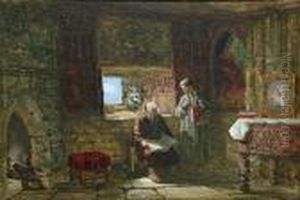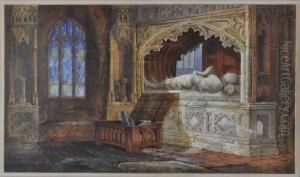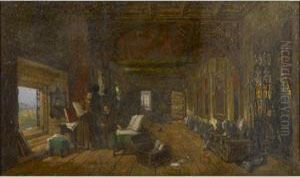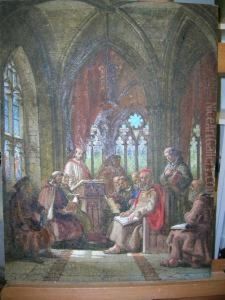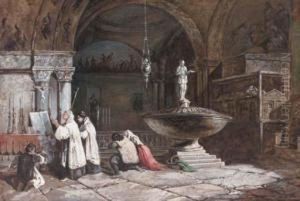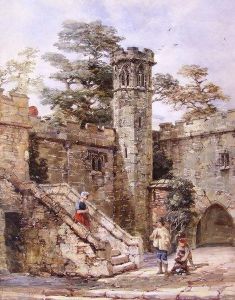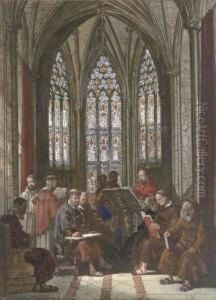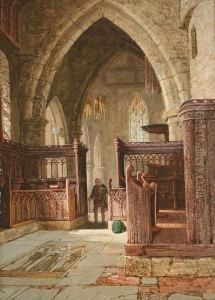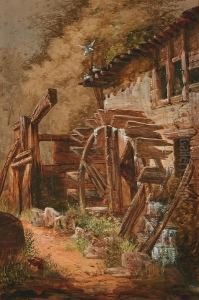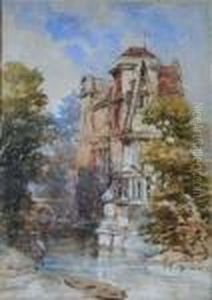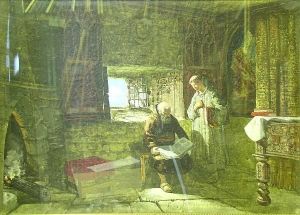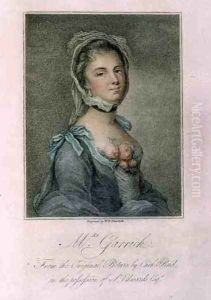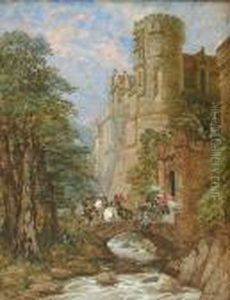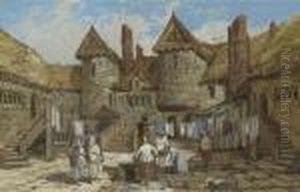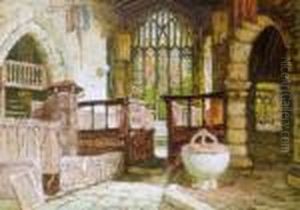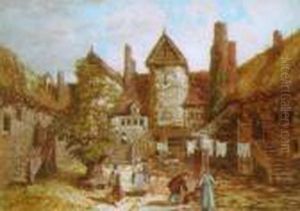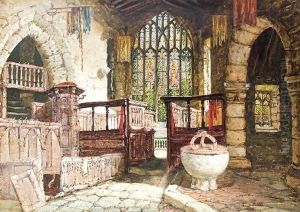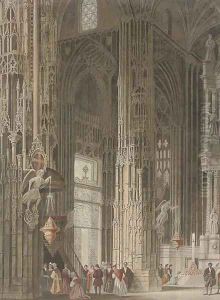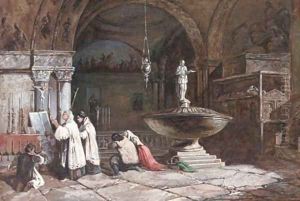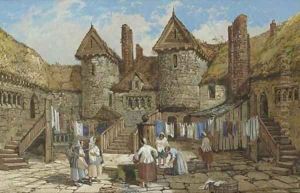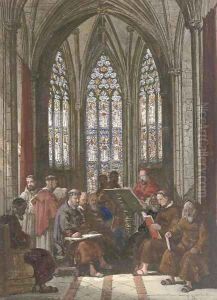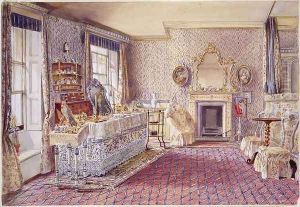Samuel A. Rayner Paintings
Samuel A. Rayner was a British artist known for his landscape and architectural paintings. Born in 1806, Rayner's artistic talents were evident from an early age, and he started to gain recognition for his work in the early 19th century. He was part of the Victorian era of artists and was significantly influenced by the dominant art movements of his time, including Romanticism and later the Pre-Raphaelite Brotherhood, although his style remained distinct and primarily focused on detailed depictions of English architecture and landscapes.
Rayner's work often depicted the picturesque and historical buildings of England, capturing their architectural beauty and the essence of rural and urban British settings. His paintings are characterized by their attention to detail, vibrant color palette, and the interplay of light and shadow, which added a sense of depth and realism to his scenes.
Throughout his career, Samuel A. Rayner exhibited at various prestigious institutions, including the Royal Academy of Arts. He was not only an artist but also an art educator, and his family, too, was artistically inclined. His daughter, Louise Rayner, became a well-known watercolorist, and other family members were also artistically active.
Rayner's contribution to British art in the 19th century was noteworthy, and his works continue to be appreciated for their historical value and artistic beauty. He passed away in 1879, leaving behind a legacy of work that provides a window into the architectural and pastoral beauty of Victorian England.
